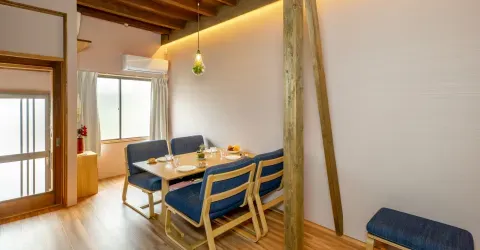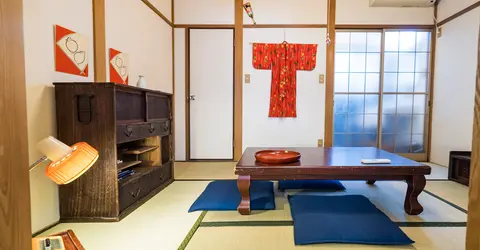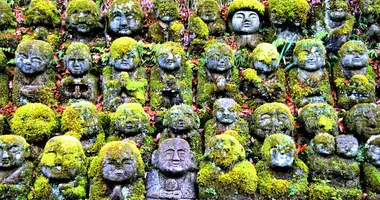Byodoin Temple 宇治平等院
A UNESCO World Heritage Site, this Byodoin temple is considered the height of expression of the aristocratic art of the Heian Period (794-1185).
Byodoin Uji
Byodoin is a Pure Land Buddhist temple founded in 1052 in Uji, just south-east of Kyoto. This World Heritage Site on the west bank of the Uji River is a trove of designated National Treasures and Important Cultural Properties. Byodoin is renowned also for its exquisite garden.
Byodoin's significance in Japan is attested to by its Phoenix Hall featuring on the reverse of the Japanese 10-yen coin, and the phoenix statue in the Hall appearing on the reverse of the current 10,000-yen note.
History
During the early years after the founding of Kyoto as the imperial capital in the 8th century, Uji became a retreat for court nobles, who built summer villas here. Byodoin was originally an aristocrat's villa, built in 998, that was converted into a temple in 1052 by the Regent Fujiwara Yorimichi (a 'regent' being one who governed in the name of the Emperor).
Garden
Byodoin has the oldest, and one of Japan's few remaining, Pure Land Buddhist gardens, characterized by a 'natural' layout. Rather than a specific "garden" per se, it is a work of overall landscaping, encompassing the whole temple grounds. Complete with a pond, the design aims to instil a sense of tranquility and oneness with nature in the visitor.
Phoenix Hall 鳳凰堂
Byodoin is dominated by the Phoenix Hall (Ho-odo) built to house the gilded, seated Amitabha (Amida) Tathagata image of the Buddha attributed to the famed sculptor Jocho. The Phoenix Hall is said to be the sole original building still remaining from the time of the temple's founding. The Phoenix Hall requires special admission, paid for separately.
Phoenix Hall literally represents the mythical Chinese Phoenix (Ho-o) descending to earth, with the central hall the body of the bird, the lateral corridors its wings and the tail represented by the rear corridor. Above the central hall on the roof are a pair of male and female bronze phoenixes.
Byodoin Temple houses numerous national treasures, including the Phoenixes after which the Hall is named, and the sole remaining Buddhist statues from the 11th century: the 52 Worshipping Bodhisattvas on Clouds, to name but two. The mythical phoenix motif is Chinese in origin and the bird was believed to be a protector of the Buddha.
Buddhist paintings by court painter Tamenari Takuma, though fading, still adorn some of the interior walls and panels of the Phoenix Hall.
Kannon Hall
On the north side of the temple is the Kannon-do (Kannon Hall) with an eleven-headed statue of Kannon and nearby the "fan-shaped lawn" where the warrior Minamoto Yorimasa is reputed to have committed suicide in 1180 after a battle with his enemy, the Taira clan.
Hoshokan Museum
The Byodoin temple museum, called the Hoshokan, provides a close-up view of the temple's treasures in a modern building, displayed in a computer-graphically reproduced interior of the Phoenix Hall.
Nearby
Uji city is the setting for the finale of Tale of Genji, Japan's famous ancient novel written by Murasaki Shikibu. The Tale of Genji Museum in Uji is dedicated to Murasaki Shikibu and her masterpiece. 3-D projections explain the final chapters of the book and the Uji heroine, Ukifune.
Ujigami Shrine (宇治上神社) is an ancient shrine closely connected with Byodo-in and can easily be visited together with the temple. The shrine buildings are the oldest still extant in Japan dating back to the 10th century. The shrine precincts contain one of the seven famous wells of Uji. The lower part of the shrine (now called Uji Shrine) has buildings from the Kamakura Period (1192-1333). Nearby is Hojoin Temple (aka Hashidera or Bridge Temple) which has the oldest stone monument in Japan, a tablet describing the construction of the first Uji Bridge over the Uji River in 646.
Byodo-in in Hawaii
A scale replica of Byodo-in was built at the foot of the Ko'olau Mountains in Hawaii in 1968. The wooden temple is built entirely without nails and has been used as a popular backdrop for such TV dramas as Hawaii Five-O, Magnum, P.I and Lost.
Address, timetable & access
Byodoin Temple
Address
Renge-116
611-0021
Japan
Timetable
Garden: 8.30 am to 5.30 pm (last entry 5:15 pm) daily. Phoenix Hall: 9:30 am - 4:10 pm, every 20 minutes, maximum 50 people per time slot. Reception begins at 9 am. Museum: 9am - 5pm (last entry 4:45pm). Tea Salon "Sabo Toka": 10am - 4:30pm (last orders at 4pm). The Tea Salon is closed Tuesdays, except when Tuesday falls on a national holiday.Price
600 yen for adults. The Phoenix Hall requires an extra admission fee of 300 yen.Website
https://www.byodoin.or.jp/en/































